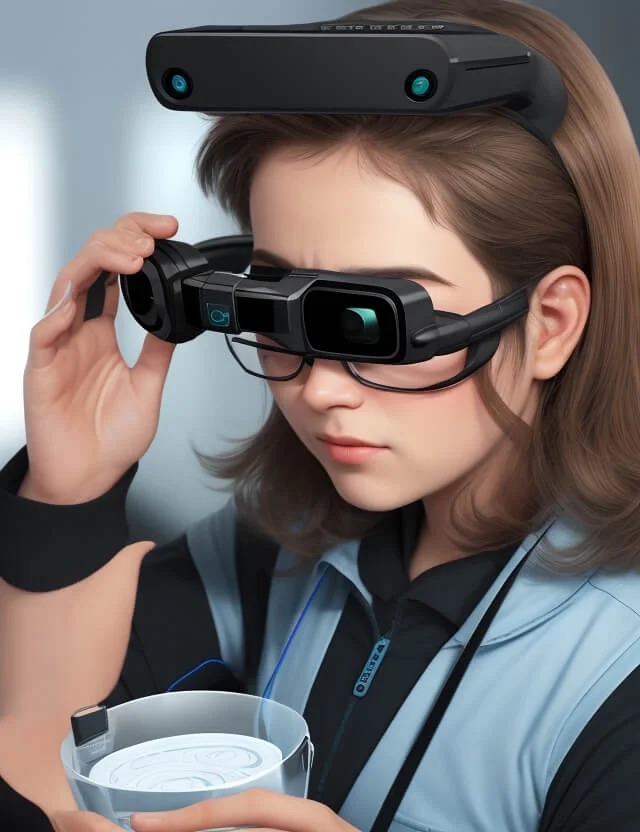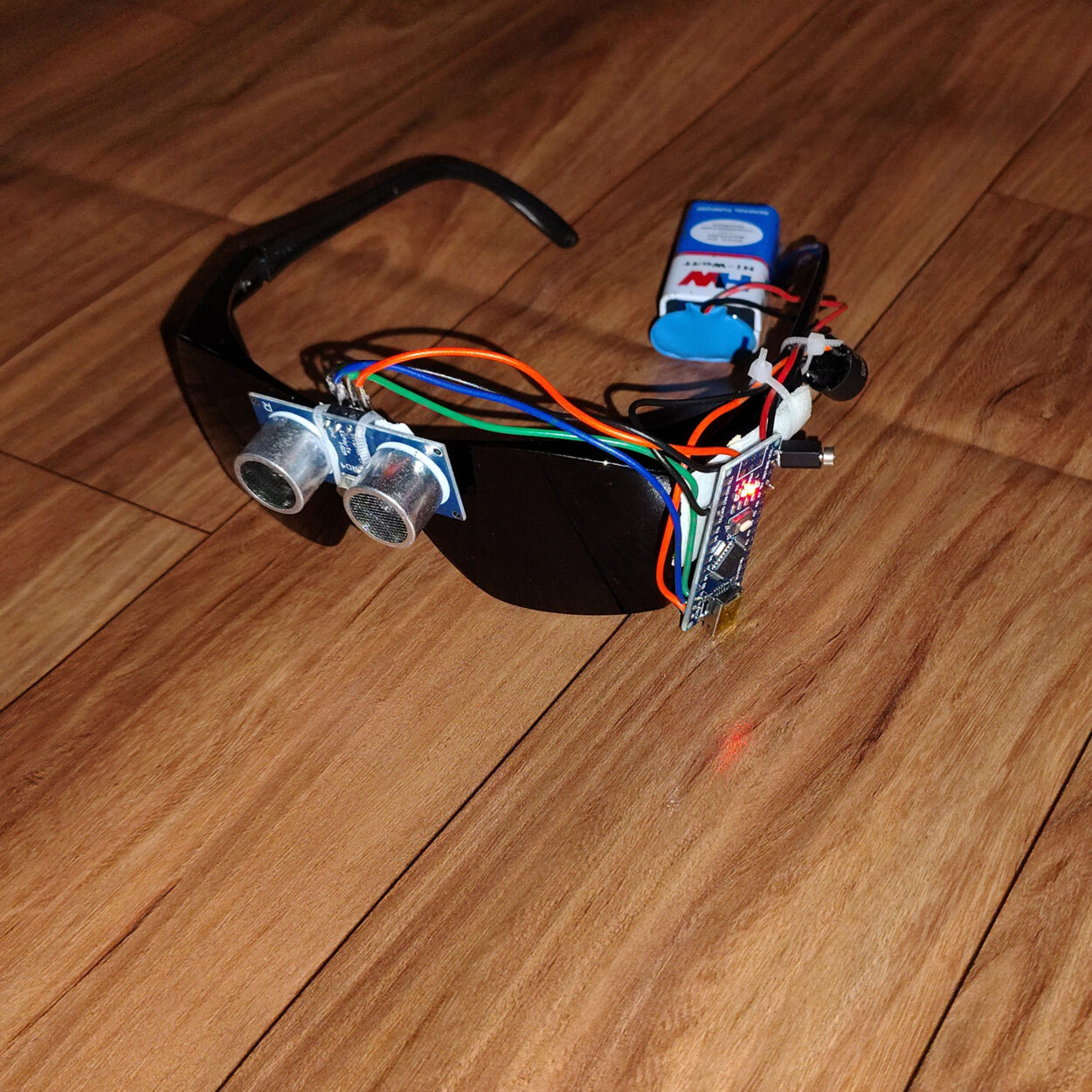The Future of Assistive Technology for the Blind: Empowering Independence
The Future of Assistive Technology for the Blind: Empowering Independence
Blog Article
Ingenious Solutions in Assistive Technology for Visual Disability
The landscape of assistive modern technology for visual problems is advancing rapidly, offering a variety of ingenious options that enhance access and freedom. From advanced smart device applications that help with navigation to wearable devices developed for real-time guidance, these devices are improving the experiences of those with visual impairments. The assimilation of smart home modern technologies and academic resources has the possible to cultivate better area interaction. However, the effects of these advancements raise important inquiries about their access and effectiveness in diverse contexts, calling for a better examination of their more comprehensive impact.
Advancements in Mobile Phone Applications
In the last few years, improvements in smart device applications have actually substantially changed the landscape of assistive technology for individuals with visual problems. These applications take advantage of the effective sensing units and abilities of modern smartphones to give users with tools that boost freedom and ease of access in their every day lives.
Remarkable among these technologies are applications created for item acknowledgment, which utilize the smartphone's electronic camera to recognize items and offer spoken descriptions. Such attributes equip users to browse their settings more effectively, whether identifying items in stores or finding individual belongings at home. Furthermore, text-to-speech applications have actually improved significantly, allowing customers to record published text through their tool's camera and get instant sound responses, thus promoting analysis and comprehension.
Community-driven applications have promoted social communication and resource sharing amongst individuals with aesthetic problems, creating a helpful network that boosts their quality of life. In general, smartphone applications have actually come to be indispensable allies in promoting freedom and availability for people with visual disabilities.
Wearable Instruments for Navigation
Wearable gadgets for navigating have become a groundbreaking remedy for individuals with visual disabilities, offering hands-free support that enhances wheelchair and orientation. These tools normally use sophisticated innovations, including GPS, ultrasonic sensing units, and expert system, to provide real-time responses and instructions to customers as they navigate their setting.
One noteworthy example of wearable navigation innovation is smart glasses, which can identify obstacles and relay auditory or haptic comments to the wearer, allowing for efficient and risk-free activity in different settings. Other tools, such as vests and belts geared up with sensing units, can likewise educate individuals of their environments by supplying alerts regarding neighboring items or changes in surface.
In addition, lots of wearable gadgets incorporate with smartphone applications, making it possible for customers to tailor their navigating choices and obtain tailored path pointers. This customization can dramatically boost the individual experience, empowering individuals to travel with better confidence and self-reliance.
As technology proceeds to create, the potential for wearable navigation devices to enhance the lifestyle for individuals with aesthetic impairments remains significant, paving the means for even more comprehensive and easily accessible environments.
Smart Home Innovation Integration

Furthermore, smart home appliances outfitted with tactile user interfaces or acoustic responses supply instinctive communications that site web provide particularly to the demands of those with visual problems. Smart fridges can announce their materials and expiry dates, while smart ovens can lead individuals with the cooking procedure with audio guidelines.
Home automation systems, such as clever buzzers and security cameras, use comfort by permitting individuals to get signals and access live feeds through their mobile phones, enhancing personal safety (AI-powered visual aids). Furthermore, combination with tablet computers and smart devices ensures that customers can manage their home atmosphere from anywhere within their premises
As clever home technology proceeds to advance, it holds the possible to change the living experiences of individuals with visual problems, fostering self-reliance and boosting lifestyle in a progressively linked globe.

Educational Equipment and Resources
Accessibility to efficient educational tools and sources is essential for people with visual problems, as it equips them to involve completely in their discovering experiences. Various assistive technologies have been established to improve availability and foster independent knowing.
Moreover, instructional software application particularly designed for aesthetically impaired customers provides functions such as high-contrast modes and adjustable text sizes. These devices suit diverse knowing designs and ensure that trainees can tailor their educational experience to their demands.
Furthermore, accessibility to audio publications and digital libraries increases the series of readily available learning materials, allowing students to check out topics extensive without the constraints imposed by standard print resources. Collective systems that incorporate accessibility functions additionally assist in team projects, making sure site link that visually impaired pupils can contribute meaningfully alongside their peers.
Community Assistance and Interaction
A durable network of community support and engagement is crucial for individuals with aesthetic disabilities, cultivating a comprehensive setting where they can flourish. Neighborhood organizations, neighborhood advocacy groups, and volunteers play a crucial duty in supplying sources, info, and companionship, which are vital for boosting the lifestyle for those influenced by visual impairments.
Engagement activities such as workshops, get-togethers, and support system not just help with skill advancement however also advertise social interaction, decreasing sensations of seclusion. These efforts motivate individuals to share obstacles, successes, and experiences, thereby enhancing neighborhood bonds. In addition, collaborations with neighborhood services can cause better access in public spaces, better incorporating individuals with visual problems right into the neighborhood.
Modern technology likewise enhances community engagement via on-line systems that use online assistance groups and resources, enabling people to attach no matter geographical obstacles. By taking advantage of both in-person and digital solutions, communities can create an extensive assistance network. Inevitably, cultivating cooperation amongst various stakeholders-- including families, teachers, and medical care experts-- makes certain that individuals with aesthetic impairments obtain the holistic assistance essential to navigate every day life properly and with dignity.
Conclusion
Innovative options in assistive modern technology for aesthetic problems dramatically improve the high quality of life for people facing these challenges. The integration of smart device applications, wearable tools, clever home technology, and educational tools cultivates better freedom and access. Moreover, neighborhood assistance and interaction additional equip aesthetically damaged individuals, advertising inclusivity and involvement in different facets of life. Jointly, these improvements not just change daily experiences however additionally lead the way for a more equitable culture.
The landscape of assistive innovation for visual disability is evolving rapidly, presenting a variety of innovative services that improve access and independence. Community-driven applications have actually promoted social communication and source sharing amongst people with visual problems, creating an encouraging network that enhances their high quality of life. Generally, smartphone applications have ended up being indispensable allies in promoting autonomy and accessibility for people with visual disabilities.
Numerous people with aesthetic disabilities are finding better autonomy through the assimilation of smart home this page innovation.Ingenious options in assistive modern technology for aesthetic impairment dramatically boost the quality of life for people encountering these difficulties.
Report this page